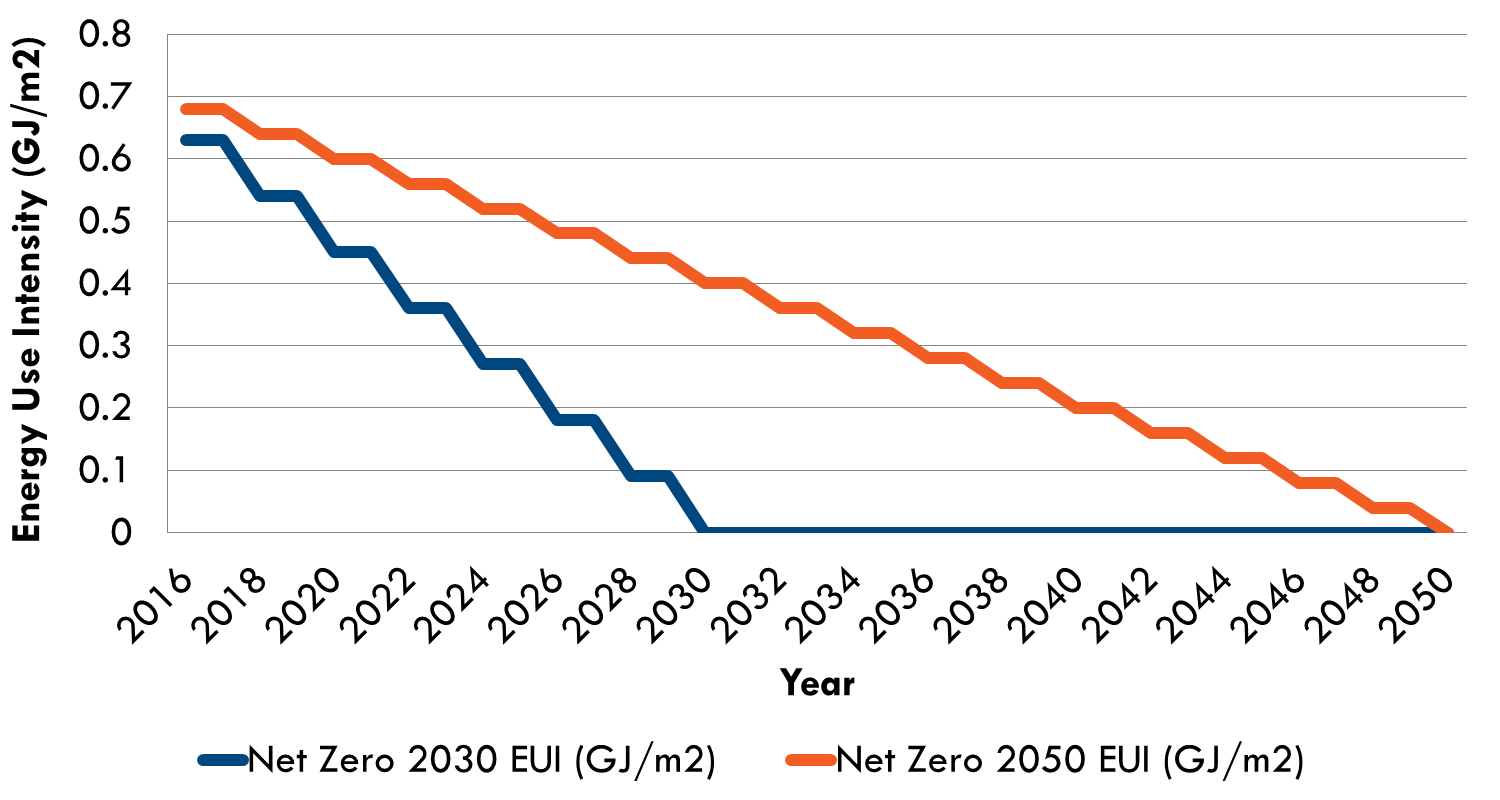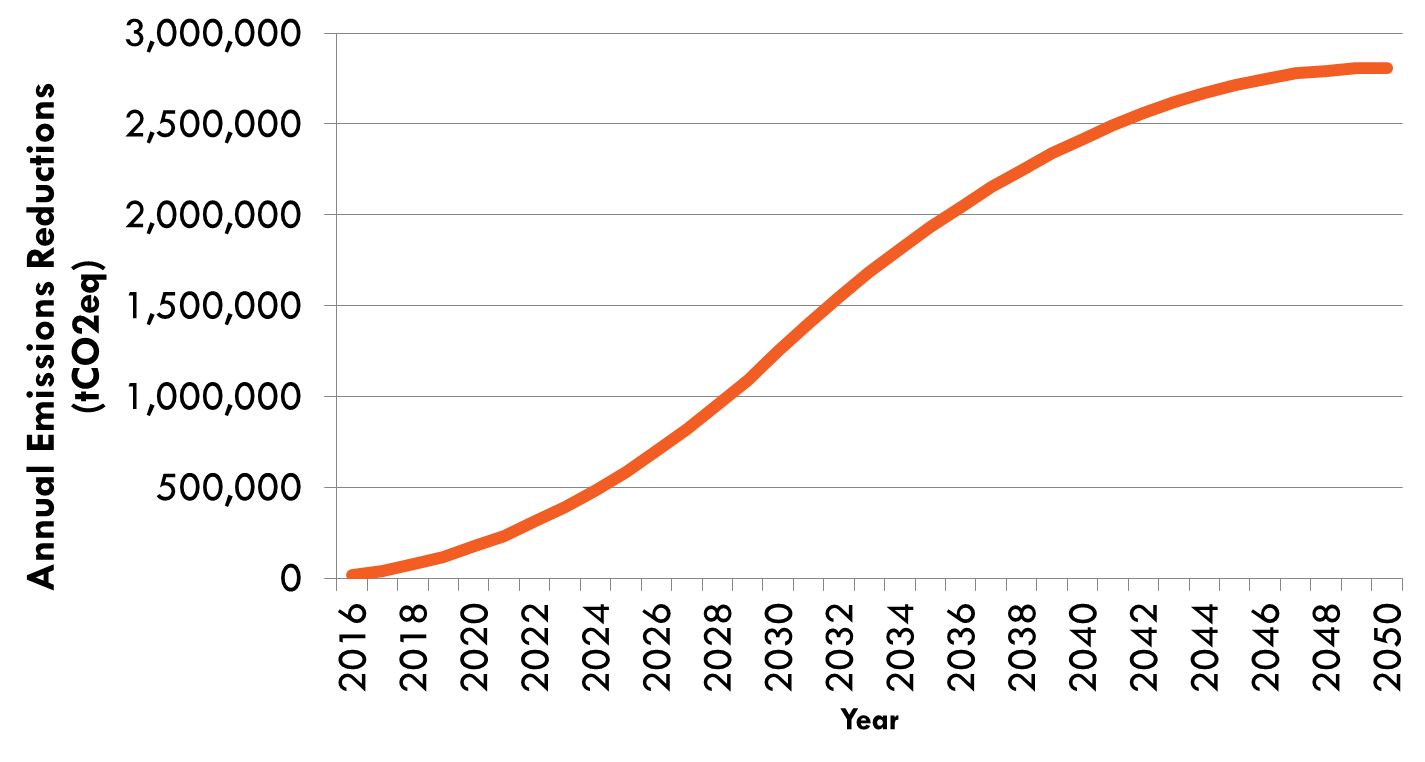When you’re in the business of carbon reduction, how do you come up with the data to account for the actual amount of emissions released into or reduced from the atmosphere? TAF follows a complex greenhouse gas (GHG) quantification process every time we evaluate an opportunity to fund or finance a project or pursue a policy. There are endless considerations and approaches you can use to measure emissions from a given activity or sector. As TAF’s quantification specialist and numbers nerd, I will lead you through the steps of quantifying a series of hypothetical GHG reduction opportunities in order to illustrate the processes and outcomes of GHG quantification.
Our first scenario for our series is: net zero energy buildings. A net zero energy building means the total amount of energy used by the building on an annual basis is roughly equal to the amount of renewable energy created on the site. For the sake of simplicity, we’re going to take this to mean the buildings are net zero emissions.
For our analysis, we will consider the potential GHG emissions reductions if Ontario’s Building Code required residential buildings to be net zero emissions by 2030, compared to the same scenario if the requirement is delayed until 2050. This is a hypothetical situation and there will be some simplifications made in order to keep this manageable.
The first step is for us to identify how buildings generate GHGs. Ignoring the embodied energy of buildings for this case (the materials, construction and eventual demolition of it), Ontario buildings or rather, the people using the building, mainly generate emissions by using energy in the form of natural gas for heating and electricity for appliances, lighting and other miscellaneous items. Water consumption and using other fuels for heating also generates emissions but those sources will not be considered for the sake of simplicity.
Now that we know the sources of emissions we need to determine the differences in total energy consumption between the two net zero scenarios. To do this we need to determine the amount of new floor space built every year and the energy use intensity of said floor space. According to the Comprehensive Energy Use Database (CEUD) Ontario’s residential floor space has been growing by about 10 million m2/year from 2009-2013, inclusive. The CEUD also states the average residential energy use intensity (EUI) is 0.72 GJ/m2 of which 22% is electricity consumption and 64% is natural gas consumption. If we assume the current energy intensity is what new buildings are consuming and that the building code is updated every 2 years (starting this year) then here’s what the new energy use intensities will look like from 2016 to 2050 given the two targets:

By multiplying the differences in EUI with the new floor space built every year we can determine how much energy is saved annually by the earlier net zero building code scenario. To convert these energy savings into emissions savings we will refer to Canada’s 2014 National Inventory Report which contains the emissions factors for Ontario electricity and natural gas consumption of 110 gCO2eq/kWh and 1,879 gCO2eq/m3, respectively. Assuming these factors stay constant from 2016 to 2050 we can multiply them by the proportional energy savings for electricity and natural gas each year. Doing so results in increasing annual reductions in GHG emissions as seen in the graph below.

We can see by 2050, residential buildings are estimated to emit almost 3 MtCO2eq less by requiring buildings to be net zero emissions by 2030 as opposed to by 2050. To put this in context, that’s about 2% of the 142 MtCO2eq in reductions Ontario aims to reduce by 2050 compared to 1990 levels.
By constructing more efficient buildings sooner we realize the benefits (reduced emissions, reduced utility costs, increase comfort, etc.) at an earlier date. We’ll also avoid costly retrofits when we realize we should have built efficiently in the first place.
Get the next blog in the series ABCs of Counting GHGs to your inbox by subscribing here.
